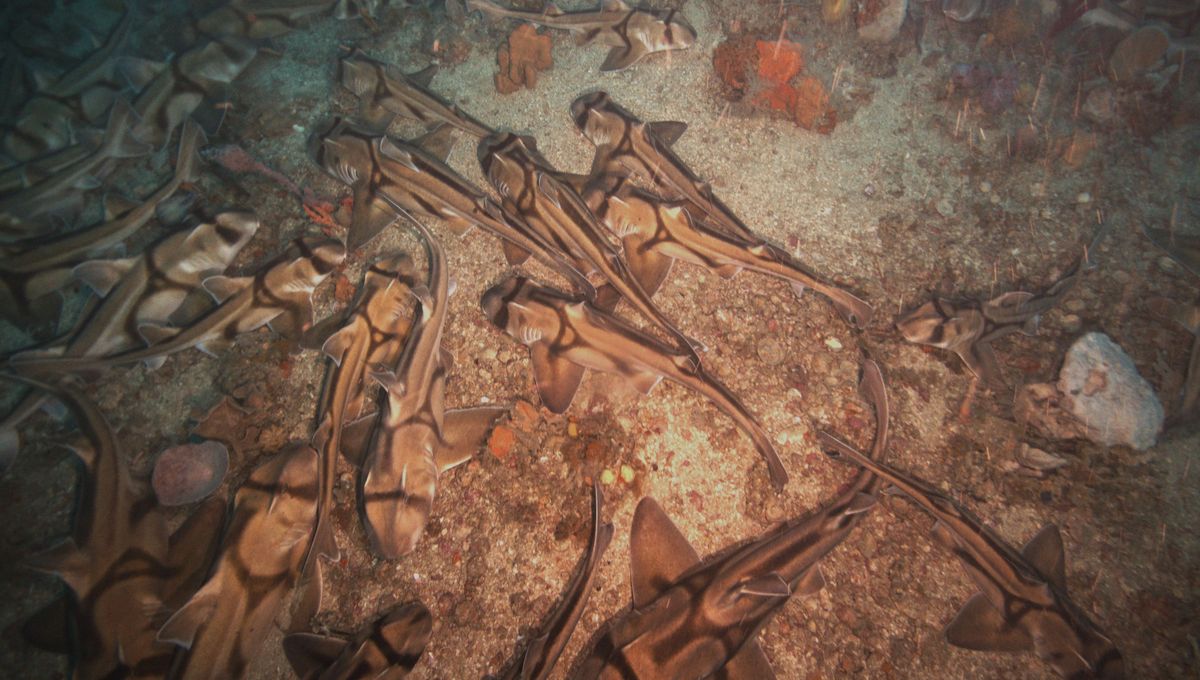
Some species in the animal world are known for their sleeping habits. From sloths snoozing in the trees to octopuses dreaming, what these animals get up to at bedtime is a source of fascination. Sharks, however, probably don’t feature very highly on the list of interesting sleepers – but they have just made a pretty strong bid to join, when researchers uncovered a surprise shark slumber party happening on the seafloor.
In the Beagle Marine Park in the Bass Strait, Australia, a remotely operated vehicle (ROV) filmed thousands of sleepy Port Jackson sharks (Heterodontus portusjacksoni) snoozing together on the seafloor. The sharks were first spotted here six years ago and the team have returned to conduct a survey on how conditions might have changed in the area. The ROV was operated from the South Australian Research and Development Institute (SARDI) research vessel MRV Ngerin.
“It was very exciting when we managed to traverse over a rise in the reef to get a glimpse of the sharks snoozing 65 metres [213 feet] below the vessel in almost the same location as they were six years ago,” said Voyage Leader Dr Jacquomo Monk, of the University of Tasmania Institute for Marine and Antarctic Studies (IMAS), in a statement. “A spectacular scene was relayed to us by a remotely operated vehicle equipped with seven cameras that was custom built by Boxfish Robotics in collaboration with IMAS. There were thousands of sharks tightly packed like a carpet spread across the seafloor.”
Port Jackson sharks are a distinctive species with blunt heads and harness-like markings across their bodies. They typically live in rocky environments near the bottom of the sea in southern Australia. They feed on a diet of mollusks, crustaceans, and sea urchins as well as small fish, foraging at night, explains the Australian Museum.
The team noticed that the sharks sleeping together on the seafloor were only the females. While there is not a clear explanation for the girls-only slumber party, Port Jackson sharks are known to only come together for mating and live apart as males and females most of the year.
“We don’t know exactly why the females are here. Perhaps they are feasting on the local delicacy – doughboy scallops – before the long trip north to lay their eggs,” continued Monk.
There is one theory that the sharks are feasting before making the long swim to lay their eggs. These swims can be as far as 600-800 kilometers (373-497 miles) and occur between the breeding and laying sites.
The fact that the sharks are still here six years after the first study shows the team that the habitat is still an important area for them. The park protects a range of diverse ocean habitats including reefs and sponge gardens, and is crucial not just for the sharks but for a wide range of above- and below-water species.
Source Link: Port Jackson Shark Slumber Party On The Seafloor Is A No Boys Allowed Event